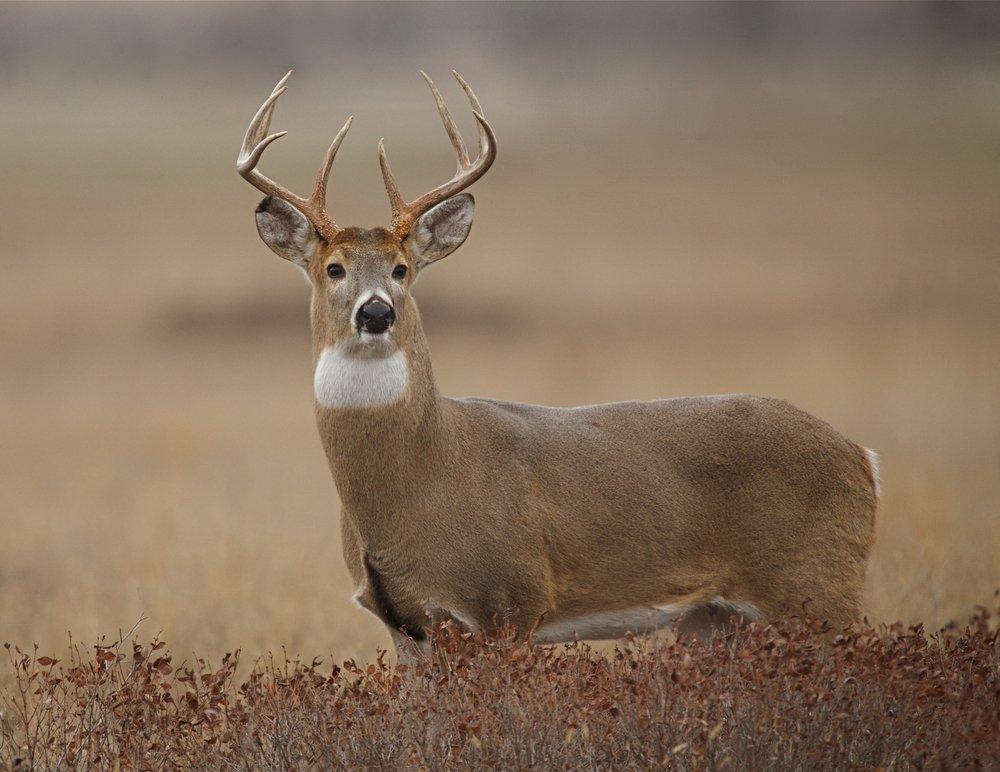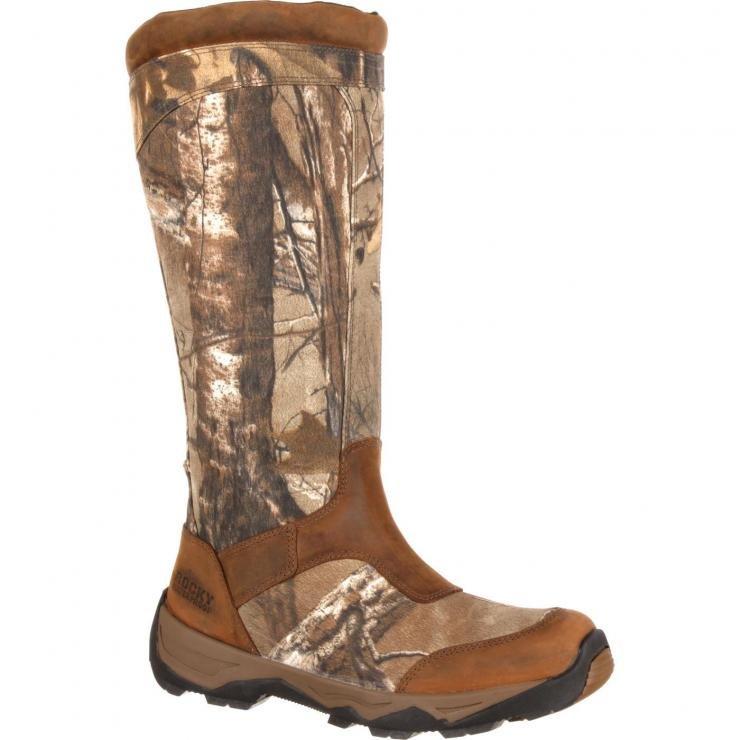Do You Know the Science Behind Them?
A friend of mine watched a buck for several years that had only three legs. Its right antler always had a T shape at its end, and the deer had a small rack. My friend finally shot The T-Handle Buck when it was 6 1/2 years old. It wouldn't have scored 100 inches gross.
Meanwhile, The Lovstuen Buck from Iowa was estimated to have scored in the 250- to 270-inch range as a non-typical in 2002 and many hunters thought the rack would surely decline. Instead, the amazing whitetail added 70 to 80 inches of antler the next year. When the deer was finally killed, it ended up scoring 319 4/8 inches.
Extremes like this, and other antler oddities, are what make the whitetail one of the most interesting animals on earth to a hunter. We all know there is always much to learn about the whitetail, both from a hunting and biological perspective. In the rest of this article, I'll supply some fascinating information about the antler growth process that will add to your knowledge of the magnificent white-tailed deer.
The Side Story
Antlerogenesis is a big word. It simply means: how antlers grow. Basically, antlers are modified bones. Besides deer hunter's fascination with them, numerous research scientists are studying their growth and composition since they are one of the fastest-growing tissues on earth. Only a few cancers grow as fast, so scientists hope to find a link between the two that would lead to a cure for cancer.
Gear Review: Rocky Retraction Waterproof Side-Zip Snake Boot
In addition, studies are underway where certain physical properties of velvet antlers are extracted and then used in the study of animals such as rats and rabbits that have osteoarthritis. In rats, feeding them this extract has resulted in them growing increased femur bone length, thickness and mineral content. Of course, osteoarthritis is a malady many people suffer with, and there are hopes the extracts from velvet antlers will eventually provide relief to these people, and possibly slow cartilage breakdown. Some scientists think cartilage repair can be achieved with these antler extracts.
As you can see, antlers are fascinating in more ways than one. Not only can their presence on a deer send our emotions sky high, they may someday be responsible for giving us relief from, or a cure for, some serious diseases.
How They Grow
Now let's see how they grow on deer.
When only a few months old, button bucks have bony projections on their foreheads, the forerunners of antlers. These bases are in truth projections of the frontal bone of the skull and are called pedicels. As the antlers start to grow, the deer's body grows a protein framework. This is composed mostly of cartilage and is covered by the skin on the frontal part of the skull. Because this skin contains small hairs, we use the term velvet to describe the antlers at this stage. It is extremely important for deer to have a high protein food source at this time, because protein determines whether the buck's antler growth potential is reached.
Interestingly, a buck's antler growth is triggered by a sudden increase in the deer's blood testosterone level in the spring. Testosterone, incidentally, is the male sex hormone produced by both the testes and the adrenal gland. It is thought this increased testosterone level in the spring is caused by the brain's reaction to longer day length (photoperiodism).
As the button buck's antlers start to grow from the pedicels, a slow-growing bud appears at first. The looks of its antlers, even at this age, have been previously coded into a portion of the brain, a mystery we don't fully understand. As the antlers start their rapid growth, they form a bulb at first and soft cartilage is formed. Later this is replaced by hard bone. During this growth time, the velvet, a kind of modified skin, nourishes the antler from the outside, not from the inside such as occurs in the growth of true horns like cattle have. The antlers at this time are soft and pliable and can be easily damaged.
Because the veins are on the antler's surface, they bleed easily. If you would touch an antler at this stage, it would be hot to the touch and you would notice the short, bristly hairs we call velvet.
As summer progresses, the antlers continue their dynamic growth rate and are fully developed in most regions of the country sometime in August. Once this occurs, the buck then sheds his summer coat of hair, replacing it with the grayish winter coat. Only then does the shedding of the velvet take place. And this happens just after the antlers become hard by a process called mineralization. Deer biologists believe the minerals carrying out this process, including all-important calcium and phosphorus, were probably stored in the deer's bones the previous growing season.
The Rut and Winter
Once the velvet is shed, the buck begins rubbing saplings to relieve itching and to build up his neck muscles. At this time, he breaks up from his buddies in the summer bachelor group and becomes aggressive in behavior. Sparring and fights with other bucks then take place in order to establish dominance. These fights may end in locked antlers and in some instances, death.
By the time the rut arrives, the buck hierarchy is established and breeding begins. By the time breeding is over the bucks are in a run down condition and some actually die from the rigors of the rut. As early as December in the Midwest, but usually in mid-February, another dramatic change takes place in the life of the surviving bucks. As testosterone levels in the blood decrease, a thin layer of tissue destruction forms right above the pedicel. This is called the abscission layer. This layer is directly responsible for the antler being able to fall off, and once it is formed the antler can topple off at any time.
Once the antler is cast, a scab soon forms over the bloody pedicel. Over the next few weeks a new antler bud is formed and the process starts all over again.
Non-Typical Antlers
As mentioned earlier, the genetic looks of a deer's antlers is coded into a portion of its brain. This is true of both the typical- and non-typical-framed rack. Researchers think 50 percent of all bucks possess some non-typical characteristics. This doesn't show up in many deer simply because they are not allowed to live long enough to show these traits. From my experiences, I believe this may be true and I agree with deer researchers that the same non-typical characteristics will show up year after year. This is especially true if the deer has reached 3.5, 4.5, or older years in age.
Non-typical antlers are also caused by injuries to the deer. Losing or injuring a leg is the most common cause. An injury to a rear leg will result in a deformity on the other side of the deer's rack. The T Handle Buck mentioned at the start of this piece is a classic example of this. With an injury to a front leg, the deformity is less predictable. In this case the antler(s) may become malformed on the same side, the other side, both sides, or not at all.
There are many other amazing characteristics of antlers that are fascinating. Researchers know the answers as to how some of these oddities are caused, but in many cases much is still unknown. One thing we do know, though, is that for a buck to reach his maximum potential and show what incredible growth he is capable of, he must have good genetics, he must be allowed to grow old, and he must have good nutrition.
Editor's Note: This was originally published on August 24, 2006
Are you a deer hunter wanting to learn how to accomplish your goals? Check out our stories, videos and hard-hitting how-to's on deer hunting.









